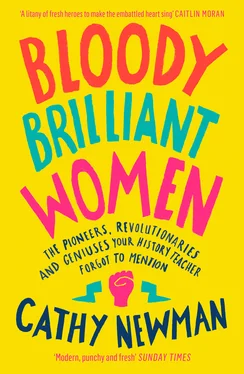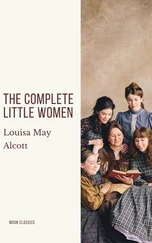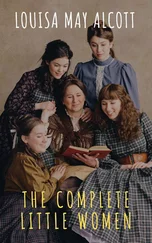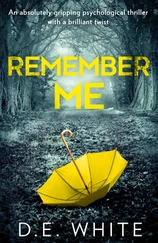Forbes worried about the ‘burden’ of bringing a child back on the ship but concluded he had no choice as Sara was now the property of the crown. He saw for the girl a future as a missionary and wrote her a glowing character reference:
For her age, supposed to be eight years, she is a perfect genius; she now speaks English well, and has a great talent for music. She has won the affections with but few exceptions, of all who have known her; by her docile and amiable conduct, which nothing can exceed. She is far in advance of any white child of her age, in aptness of learning, and strength of mind and affection … Her mind has received a moral and religious impression and she was baptised according to the rites of the Protestant Church.8
When Sara finally met Queen Victoria at Windsor Castle the queen was delighted with her, agreeing with Forbes that she was ‘sharp and intelligent’. ‘Sally’, as Victoria called her, became the queen’s goddaughter and for the next year was raised by the Forbes family like any other upper-middle-class English child. She visited the royal household several times and struck up a friendship with Princess Alice, Victoria and Albert’s second daughter, who was a similar age.
In 1851, however, Sara developed a persistent cough. Victoria’s doctors concluded that Britain’s wet climate was bad for Sara’s health and she was sent back to Africa to be educated at missionary school. But she was unhappy there and a few years later, when Sara was twelve, Victoria gave her permission to return to Britain.
She attended the wedding of Victoria, the Princess Royal, and in August 1862 was herself married at St Nicholas’ Church in Brighton to a Yoruba businessman, Captain James Pinson Labulo Davies. The couple returned to West Africa, where Sara gave birth to a daughter, named – you guessed it – Victoria. The queen became her godmother too, and when Sara brought the baby to meet her namesake, Victoria observed: ‘Saw Sally, now Mrs Davies, & her dear little child, far blacker than herself … a lively intelligent child with big melancholy eyes.’ Sara went on to have two more children. But she developed tuberculosis and died in 1880, the year our imaginary time-traveller arrives in Britain.
Sara Forbes Bonetta is fascinating because, simply by existing and behaving as she did, she debunked contemporary theories about race which held that anyone who wasn’t Anglo-Saxon was an example of a lower evolutionary form. John Beddoe, author of The Races of Britain (1862) and President of the Anthropological Institute 1889–1891, believed ‘Africanoids’ were related to Cromagnon man. But remember Captain Forbes’ extraordinary assessment: ‘She is far in advance of any white child of her age …’
It’s a shame neither Bonetta nor Seacole, who died in 1881, lived to see the new age that was dawning. Everywhere there was evidence of a rupture with the past, with everything known and familiar. The telegraph network made it possible to communicate quickly and reliably over huge distances. The first petrol-driven internal combustion engine was constructed in 1884 by Edward Butler. By the 1880s most new houses would have come with gas pipes and lamps as standard. Not surprisingly, the pace of development left many struggling to keep up.
Foremost among those left behind were the poor. The Poor Law Amendment Act of 1834 meant that if you wanted help, you had to go to the workhouse to get it, with all the hardship that entailed. Disease, starvation and overcrowding were still widespread, though by the 1880s the middle classes had acquired a greater capacity to be shocked and/or titillated by them: books and pamphlets such as Andrew Mearns’ The Bitter Cry of Outcast London (1883) and George R. Sims’ How The Poor Live (1883) found a ready readership.
To a significant degree, the job of sorting this mess out fell into the laps of women, as if women alone had the necessary resources to make a difference. In most cases these sorter-out women were upper middle class. The respectable helped the ‘lowly’ – until the battle for suffrage turned serious, at which point factory workers and MPs’ wives suddenly found themselves members of the same team.
The virtuous militancy that had powered protest groups like the Chartists – who wanted greater political representation for the working classes – was still in the air in the 1870s and 1880s. But increasingly it was being harnessed by women like the social reformers Clementina Black; Rachel and Margaret McMillan; Beatrice Webb; and Lydia Becker, who founded the first national suffrage campaign group, the National Society for Women’s Suffrage (NSWS), in 1867. It was hearing Lydia speak at a NSWS meeting in 1872 which radicalised a young Emmeline Pankhurst.
What these women had in common was, mostly, determination; though sometimes hardship too.
Clementina Black certainly knew how tough life was for many women. Her mother had died from a rupture while attempting to lift her invalid father, leaving twenty-one-year-old Clementina to look after him and her seven younger siblings. That she managed to write her first novel, A Sussex Idyll , while doing this speaks volumes; though it’s for her work with the Women’s Industrial Council (WIC), which she founded in 1894, and the Women’s Trade Union League (WTUL) rather than her fiction that Black is remembered.
Rachel and Margaret McMillan had to overcome tragedy too. Born in New York in 1859 and 1860 respectively, they returned to their parents’ native Inverness with their mother after scarlet fever had killed their father and infant sister and left Margaret deaf. (Her hearing returned when she was fourteen.) Their conversion to Christian socialism in the late 1880s ignited an obsession with educational reform. They paid particular attention to working-class children, and their campaigning led to a change in the law to provide free school meals for children and the proper training of nursery teachers. They would go on to open school-cum-clinics like the Deptford Clinic, which acted as a medical centre for local children, and ‘night camps’ where children from deprived areas could camp outside as well as wash and obtain clean clothes.
Before activism dominated her life, home-schooled Lydia Becker had been an amateur scientist – specialist subjects: botany and astronomy – who published a book, Botany for Novices (1864), and corresponded regularly with Charles Darwin. Becker would send Darwin specimens of plants indigenous to Manchester and contributed to his work on plant dimorphism. In return, Darwin acted as her unofficial tutor and mentor and, when Becker asked if he had a spare paper she might read out at the inaugural meeting of her quietly radical Manchester Ladies’ Literary Society – ‘Of course we are not so unreasonable as to desire that you should write anything specially for us’ – he generously sent over three.9
Beatrice Webb is better-known. With her husband Sidney, she would go on to be a founding member of what is now Britain’s oldest political think tank, the Fabian Society and, in 1895, the London School of Economics. Her approach to social reform was to drip-feed socialist ideas into the minds of Britain’s ruling elite. As young, unmarried Beatrice Potter, however, she worked with the sociologist Charles Booth on his monumental study of the Victorian slums Life and Labour of the People in London , published between 1889 and 1903.
Webb didn’t call herself a socialist until February 1890, when she declared her conversion in her diary, but she wrote several years earlier of the ‘growing uneasiness, amounting to conviction’ she felt that ‘the industrial organisation, which had yielded rent, interest and profits on a stupendous scale, had failed to provide a decent livelihood and tolerable conditions for a majority of the inhabitants of Great Britain’.10
Читать дальше












